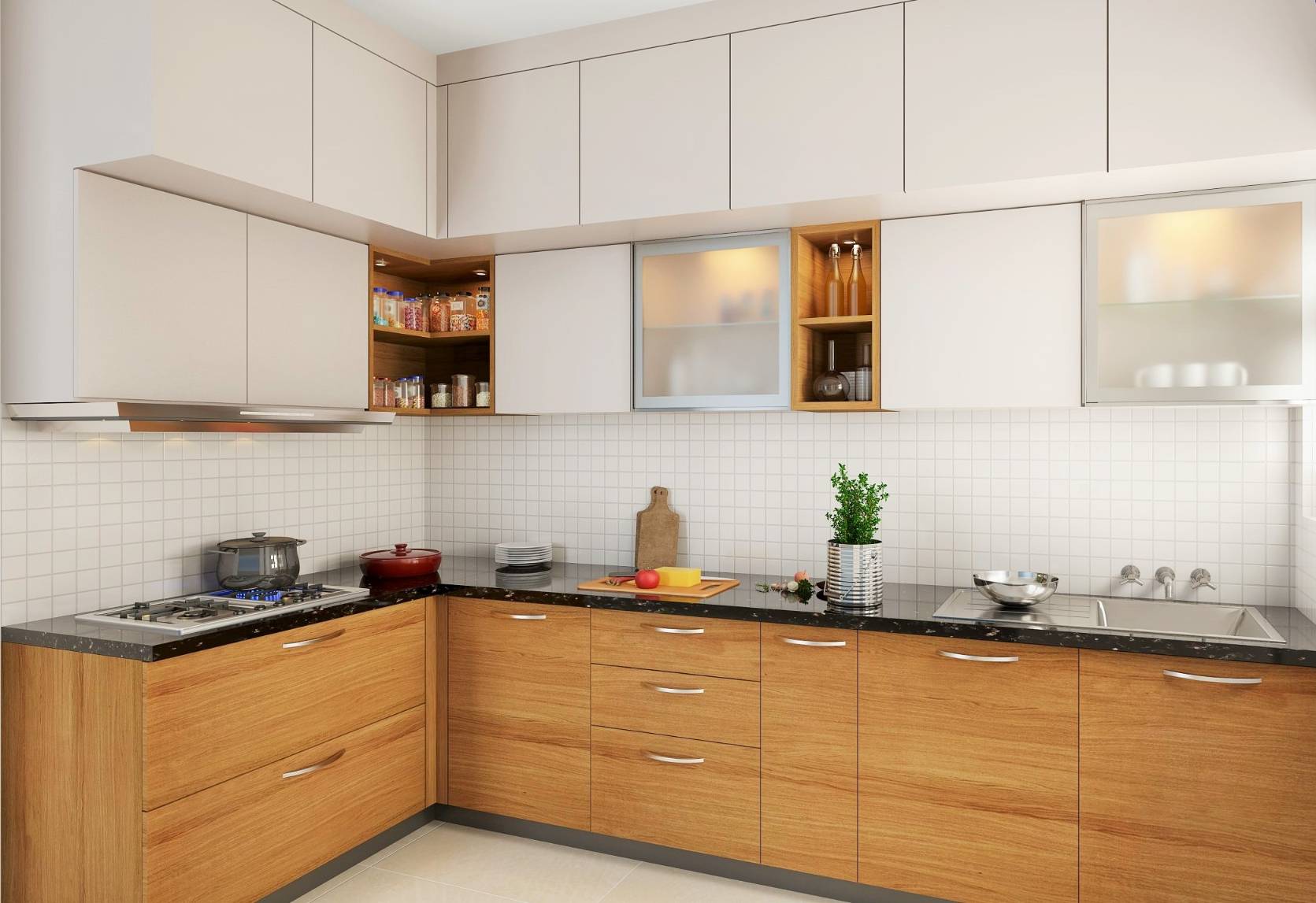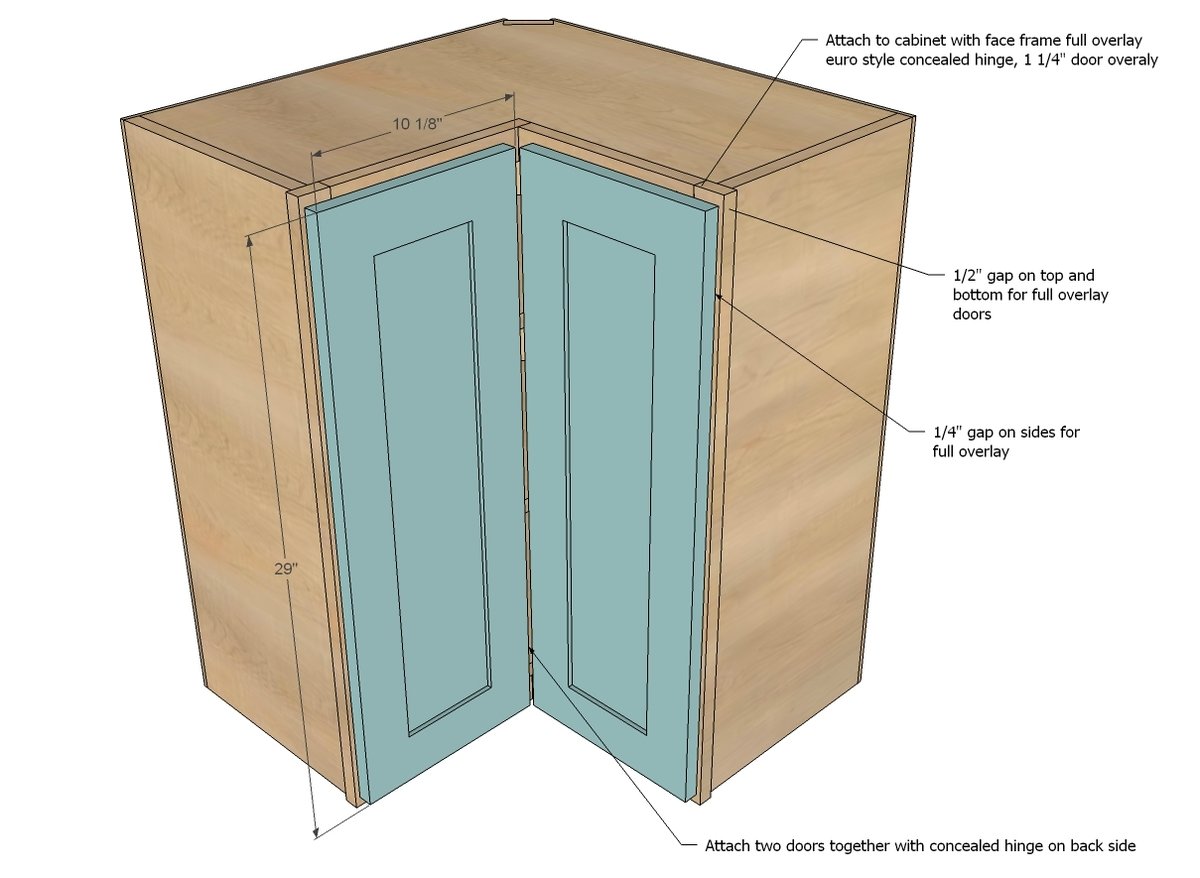Corner Kitchen Cabinet Top Design and Functionality

Corner kitchen cabinet tops are a unique design element that can significantly impact the functionality and aesthetics of your kitchen. While they provide valuable storage space, the challenge lies in maximizing accessibility and ease of use. This section will delve into the advantages and disadvantages of corner cabinet tops, compare different designs, and identify the best options for various kitchen layouts and needs.
Advantages and Disadvantages of Corner Kitchen Cabinet Tops
Corner kitchen cabinet tops offer a unique advantage by utilizing often-wasted space in the corner of your kitchen. This provides ample storage for infrequently used items, maximizing kitchen efficiency. However, accessing items stored within these cabinets can be challenging due to their awkward location.
Corner Cabinet Top Designs
Different corner cabinet top designs offer varying levels of accessibility and storage capacity. Understanding the features and drawbacks of each design is crucial for selecting the most suitable option for your kitchen.
Lazy Susans
Lazy Susans are rotating shelves that allow easy access to items stored in the corner. They are commonly used for storing spices, jars, and other frequently used items. Lazy Susans come in various sizes and configurations, with some offering multiple tiers for increased storage.
Pull-Out Shelves
Pull-out shelves extend from the cabinet, providing a clear view of stored items. They are an excellent choice for storing larger items like pots, pans, or baking sheets. Pull-out shelves can be customized with different shelf configurations to suit individual needs.
Carousels
Carousels are similar to lazy susans but with a more compact design. They consist of a rotating platform with shelves that spin around a central axis. Carousels are ideal for storing smaller items like snacks, canned goods, or cleaning supplies.
Choosing the Best Corner Cabinet Top Design
The best corner cabinet top design depends on several factors, including the size of your kitchen, your storage needs, and your budget.
Small Kitchens
In smaller kitchens, space is a premium. Carousels or pull-out shelves with narrow profiles are ideal for maximizing storage while minimizing the footprint of the cabinet.
Large Kitchens
Large kitchens can accommodate larger corner cabinets, allowing for more storage space. Lazy susans with multiple tiers can effectively utilize this space, providing ample storage for a variety of items.
Storage Needs
Consider the types of items you need to store in your corner cabinet. For frequently used items, a lazy susan or pull-out shelf may be the best option. For less frequently used items, a carousel or standard shelf configuration may be sufficient.
Designing a Corner Cabinet Top for Maximum Storage and Accessibility
Designing a corner cabinet top that maximizes storage and accessibility requires careful planning. Consider the following factors:
Depth and Width
The depth and width of the cabinet will determine the amount of storage space available. A deeper cabinet will allow for more vertical storage, while a wider cabinet will provide more horizontal storage space.
Shelf Configuration
Choose a shelf configuration that maximizes the available space while allowing easy access to all items. Consider using adjustable shelves, pull-out shelves, or lazy susans to optimize storage and accessibility.
Lighting
Proper lighting is essential for visibility inside the cabinet. Consider installing under-cabinet lighting or a small interior light to illuminate the contents.
Organization
Utilize storage solutions like bins, baskets, and dividers to keep items organized and easily accessible.
Corner Kitchen Cabinet Top Materials and Finishes

Choosing the right materials and finishes for your corner kitchen cabinet tops is crucial, as they impact both the aesthetics and functionality of your kitchen. You want a material that’s durable, stylish, and fits your budget. This section delves into the popular options, highlighting their pros and cons.
Wood
Wood is a classic choice for kitchen cabinet tops, offering a natural beauty and warmth that can enhance any kitchen design.
- Pros:
- Natural Beauty: Wood comes in various grains and colors, providing a unique and elegant look.
- Durability: Hardwoods like oak, maple, and cherry are known for their strength and resistance to scratches and dents.
- Customization: Wood can be stained, painted, or finished to match your kitchen’s style.
- Cons:
- Cost: Hardwood can be expensive, especially for larger countertops.
- Maintenance: Wood requires regular sealing and upkeep to prevent water damage and stains.
- Sensitivity: Wood is susceptible to heat, scratches, and moisture, requiring careful handling.
Laminate
Laminate is a cost-effective and versatile option for kitchen cabinet tops, offering a wide range of styles and patterns to match any kitchen design.
- Pros:
- Affordability: Laminate is significantly cheaper than wood or stone.
- Durability: Laminate is resistant to scratches, stains, and heat, making it a practical choice for high-traffic areas.
- Variety: Laminate comes in countless colors, patterns, and textures, mimicking the look of natural materials like wood or stone.
- Cons:
- Appearance: Laminate can sometimes look artificial, lacking the natural beauty of wood or stone.
- Seams: Laminate countertops often have visible seams, which can detract from the overall aesthetic.
- Limited Customization: While laminate offers a wide range of styles, it’s not as customizable as wood or stone.
Granite
Granite is a luxurious and durable choice for kitchen cabinet tops, known for its stunning natural patterns and exceptional resistance to heat, scratches, and stains.
- Pros:
- Durability: Granite is one of the hardest and most durable countertop materials, resisting scratches, stains, and heat.
- Unique Beauty: Each slab of granite has a unique pattern, making your countertop truly one-of-a-kind.
- Heat Resistance: Granite is heat-resistant, making it safe for placing hot pots and pans directly on the surface.
- Cons:
- Cost: Granite is one of the most expensive countertop materials.
- Weight: Granite is a heavy material, requiring specialized installation and support.
- Porosity: Granite is slightly porous and can absorb stains if not properly sealed.
Finishes
Once you’ve chosen your material, you can further personalize your corner kitchen cabinet tops with various finishes.
- Paint: Paint is a versatile option for adding color and style to your cabinet tops. It’s relatively inexpensive and can be easily refreshed if needed.
- Stain: Stain is a popular choice for wood cabinet tops, enhancing the natural beauty of the grain while adding color and depth.
- Veneer: Veneer is a thin layer of wood that’s applied to a substrate, providing the look and feel of solid wood at a lower cost.
Materials and Finishes Comparison Table, Corner kitchen cabinet top
| Material | Properties | Price Range |
|---|---|---|
| Wood | Natural beauty, durable, customizable | High |
| Laminate | Affordable, durable, variety of styles | Low to Medium |
| Granite | Durable, heat-resistant, unique beauty | High |
| Paint | Versatile, inexpensive, easy to refresh | Low |
| Stain | Enhances wood grain, adds color and depth | Medium |
| Veneer | Looks and feels like solid wood, lower cost | Medium |
Corner Kitchen Cabinet Top Installation and Maintenance

Installing a corner kitchen cabinet top is a DIY project that can give your kitchen a fresh look and feel. While it might seem daunting, with the right tools, materials, and a little patience, you can achieve a professional-looking finish. This section will guide you through the installation process, highlight common challenges, and provide essential maintenance tips for different corner cabinet top materials.
Installing a Corner Kitchen Cabinet Top
Installing a corner kitchen cabinet top requires precision and care to ensure a smooth and secure fit. Here’s a step-by-step guide:
- Measure and Cut: Carefully measure the dimensions of your corner cabinet top, ensuring accuracy. Cut the countertop to size using a circular saw or a table saw. Make sure the cuts are clean and precise to avoid gaps or uneven edges.
- Prepare the Cabinet: Clean the surface of your corner cabinet thoroughly to remove any dirt or debris. Apply a bead of construction adhesive along the edges of the cabinet top where it will meet the cabinet.
- Position and Secure: Carefully position the countertop onto the prepared cabinet surface, ensuring it is aligned and level. Secure it in place using clamps or weights while the adhesive dries. You can also use screws to reinforce the connection, drilling pilot holes first to avoid splitting the countertop.
- Finish and Seal: Once the adhesive has dried completely, you can apply a sealant or finish to the countertop. This will protect it from stains, scratches, and moisture. Choose a sealant that is compatible with your countertop material.
Common Installation Challenges and Solutions
Installing a corner kitchen cabinet top can present certain challenges, but with the right approach, you can overcome them:
- Uneven Cabinet Surface: If your cabinet surface is uneven, it can cause the countertop to sit unevenly. Use shims or leveling blocks to adjust the countertop to a level position before securing it.
- Difficult Cuts: Cutting the countertop to size can be tricky, especially for intricate shapes or curves. Use a jigsaw or a template to ensure accurate and clean cuts.
- Improper Sealing: If the countertop is not properly sealed, it can become susceptible to stains, scratches, and moisture damage. Use a high-quality sealant that is compatible with your countertop material.
Maintaining Different Corner Cabinet Top Materials
Different corner cabinet top materials require specific maintenance procedures to preserve their beauty and longevity:
- Laminate: Laminate countertops are known for their durability and affordability. To maintain their shine, wipe them clean with a damp cloth and mild detergent. Avoid abrasive cleaners or harsh chemicals, as they can damage the surface.
- Granite: Granite countertops are naturally resistant to stains and scratches, but they require regular sealing to maintain their protective layer. Use a granite-specific sealant and apply it according to the manufacturer’s instructions. Avoid using acidic cleaners, as they can etch the surface.
- Quartz: Quartz countertops are non-porous and extremely durable. They are also resistant to stains and scratches. To clean them, use a damp cloth and mild detergent. Avoid abrasive cleaners or harsh chemicals, as they can dull the surface.
- Solid Surface: Solid surface countertops are made from a non-porous material that is resistant to stains and scratches. They can be cleaned with a damp cloth and mild detergent. Avoid abrasive cleaners or harsh chemicals, as they can damage the surface.
Tools and Materials for Installing a Corner Kitchen Cabinet Top
Here is a list of tools and materials you will need for installing a corner kitchen cabinet top:
- Measuring tape
- Pencil
- Circular saw or table saw
- Jigsaw (optional)
- Construction adhesive
- Clamps or weights
- Screws
- Drill
- Pilot drill bits
- Sealant
- Damp cloth
- Mild detergent
Corner kitchen cabinet tops offer valuable storage space, often utilized for displaying decorative items. Similar to the way a watch wall display cabinet showcases a prized collection, the corner cabinet top can be used to display cherished kitchenware or family heirlooms, adding a personal touch to the space.
When selecting items for display, consider the overall aesthetic of the kitchen, ensuring a cohesive and visually appealing arrangement.
Corner kitchen cabinet tops offer a unique opportunity to add storage and style to a frequently overlooked space. They can be used to display decorative items, house cookbooks, or even serve as a small bar area. For a classic and elegant look, consider incorporating a white and wood china cabinet like this one as a focal point.
Its timeless design will complement the corner cabinet top and create a cohesive aesthetic in your kitchen.
